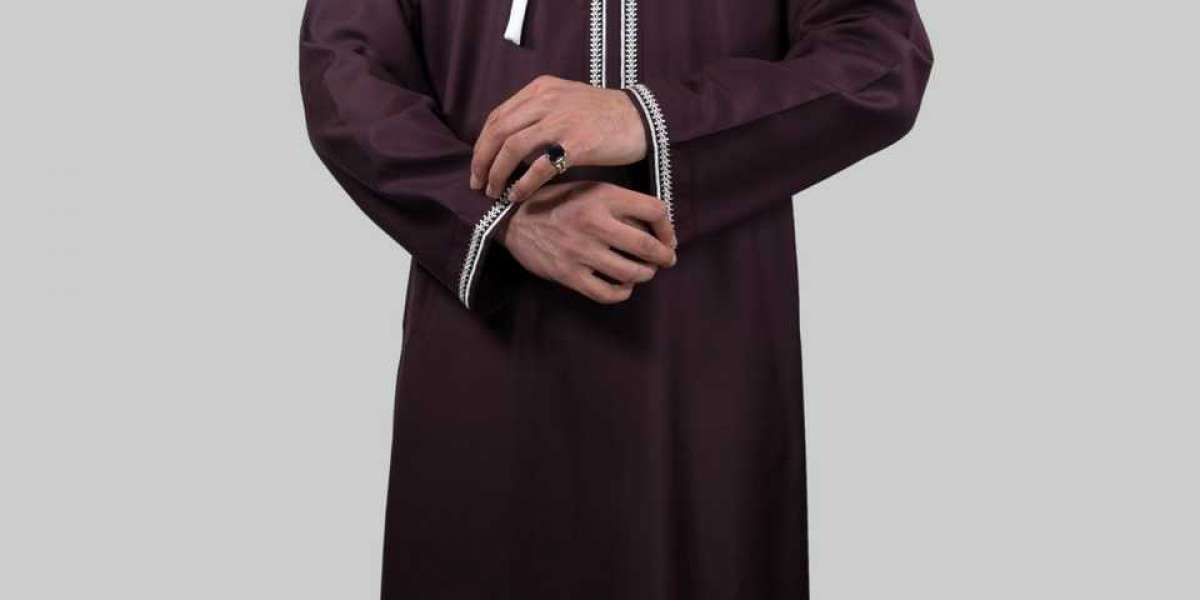The Moroccan thobe, a garment deeply woven into the cultural fabric of Morocco, stands as a powerful symbol of identity, faith, and practicality. More than just clothing, it represents a heritage passed down through generations, adapting to the times while retaining its fundamental elegance and functionality. Among its distinctive features, the hood stands out as a particularly significant element, adding layers of meaning and purpose to this iconic attire.
A Garment Rooted in History
The history of the Moroccan thobe with hood, also known as a djellaba, stretches back centuries. Its design reflects the diverse influences that have shaped Moroccan culture, from Berber traditions to Arabesque styles. Traditionally crafted from wool, cotton, or a blend of both, the thobe's loose and flowing silhouette provided comfort and protection against the varying climates of Morocco, from the scorching desert heat to the cooler mountain air. Over time, the thobe has evolved in terms of fabrics, embellishments, and tailoring, yet its core design and significance remain steadfast.
The Integral Hood: More Than Just an Accessory
The hood, or qob, is an inseparable part of the traditional Moroccan thobe. It is not merely a decorative addition but serves several crucial functions:
Protection from the Elements
In a land where the sun can be intense and sudden sandstorms can sweep across the landscape, the hood offers vital protection. It can be easily drawn up to shield the head and face from the sun's rays, preventing sunburn and heatstroke. Similarly, during dusty conditions, the hood acts as a barrier, keeping sand and debris away from the face and hair. In cooler weather, particularly in the evenings or in the mountainous regions, the hood provides an extra layer of warmth, trapping body heat and offering protection against the chill.
A Symbol of Modesty and Reverence
Beyond its practical uses, the hood carries significant cultural and religious connotations. In Islamic tradition, modesty is highly valued, and the hood can be used to cover the head as a sign of respect, particularly during prayer or when visiting religious sites. This act of veiling is a personal expression of faith and humility.
A Touch of Mystery and Tradition
The draped hood also lends an air of mystery and traditional charm to the wearer. It evokes images of ancient travelers and the timeless beauty of Moroccan culture. The way the hood falls and frames the face can add to the overall aesthetic appeal of the thobe, contributing to its distinctive silhouette.
Modern Adaptations and Enduring Appeal
While deeply rooted in tradition, the Moroccan thobe with a hood continues to evolve. Modern designers are incorporating new fabrics, colors, and embellishments, catering to contemporary tastes while respecting the garment's heritage. You can find thobes in lighter materials for warmer climates and more intricately embroidered designs for special occasions. Despite these adaptations, the presence of the hood remains a defining characteristic, signifying the thobe's authenticity and connection to its cultural origins.
Conclusion
The Moroccan thobe with its integral hood is far more than just a piece of clothing. It is a testament to the rich history, practical wisdom, and deep-seated cultural values of Morocco. The hood, serving as both a functional element and a symbol of modesty and tradition, underscores the enduring appeal of this majestic garment. Whether worn for everyday comfort, religious observance, or special occasions, the hooded Moroccan thobe continues to be a powerful expression of Moroccan identity, connecting wearers to their past while confidently embracing the future.




